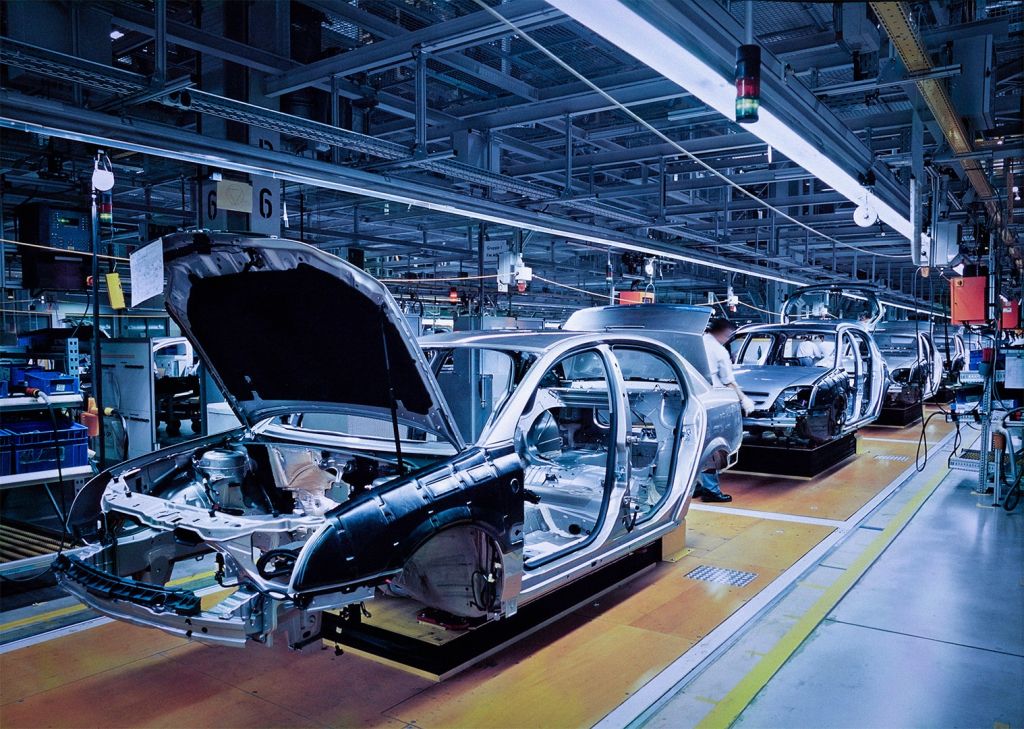One of the key changes to come out of the renegotiated North American Free Trade Agreement (NAFTA) when it became the Canada-U.S.-Mexico Agreement (CUSMA) in 2018 concerns the conditions under which automotive trade takes place on this continent. The new agreement’s stricter automotive rules-of-origin were a key political outcome of the renegotiated trade pact and were presented as a victory for autoworkers.1
Under NAFTA, at least 62.5 per cent of a vehicle, engine or transmission must have originated within North America to qualify for tariff-free treatment. Under CUSMA, the North American content requirements were raised to 75 per cent for light duty vehicles and core parts, and 70 per cent for heavy duty trucks and principal auto parts, among other changes shown in Table 1.
Proponents of CUSMA said that these new, more aggressive auto rules would address the competitive imbalances within North America caused by NAFTA, notably chronically low wages in Mexico and major capital outflows from the U.S. and Canada. By 2018, Mexico accounted for 45 per cent of North American auto jobs while representing only eight per cent of North American auto sales. This disproportionate sector growth came to define NAFTA as a trade deal directly responsible for job losses in the heavily unionized auto sector in Canada and the northeastern U.S., and low-wage job growth in Mexico and the non-unionized U.S. south.
This regional de-industrialization of the auto sector had economic and political ramifications. Auto assembly plants are economic development anchors for communities. Auto plants provide good jobs with above-average wages and benefits that bolster local economies through spending and taxes. These facilities also spur local supply chain growth in component parts, transportation logistics, community services, and research and development.
The closure of an assembly plant, which typically employs thousands of workers, reverberates through the local supply chain resulting in greater job loss and service decline. Such disruptive and dislocating experiences for working people drive feelings of fear, anxiety and resentment toward those responsible for these outcomes, notably employers and government officials. The politicization of this anger became the frame through which NAFTA auto trade rules were renegotiated.
Advocates of CUSMA also proposed that new auto trade rules had the potential to “re-shore” (i.e., re-establish manufacturing in North America) foreign-sourced auto sector inputs, such as steel, aluminum, and other component parts previously offshored to overseas low-wage jurisdictions, notably China. Finally, the CUSMA auto rules included, for the first time, an hourly wage requirement for assembly plant labour that must be met for an automaker to qualify a vehicle to receive preferential-tariff treatment.
CUSMA impact on North American auto sector investment
The result of these changes to NAFTA’s old rules-of-origin, among other factors, has been a shakeup in auto investment across the continent. The coming-into-force of CUSMA and its expanded automotive rules-of-origin coincided with the COVID-19 pandemic, major factory shutdowns and a supply chain shock that hampered vehicle production in various plants for many months. This production shock prompted global automakers to accelerate investments in large-scale, next generation vehicle electrification architecture and associated zero-emission technologies, including advanced batteries.
Between January 2020 and March 2024, automakers invested nearly $175 billion USD into North American vehicle assembly and parts facilities, dwarfing the amount of capital investment in both internal combustion engine technology and zero-emission vehicles over the prior decade.2 Canada received a significant and outsized share of this investment frenzy (approximately 14 per cent), thanks in part to its strategic proximity to the materials (e.g., minerals) required to make EVs. This level of investment is greater than Canada’s current share of North American production and almost double the share of new investment earmarked for Mexico.
Government officials, including those in the United States, have pointed to these positive investment outcomes to justify the effectiveness of new CUSMA auto rules.3 Automakers require significant lead time to make future product and sourcing decisions. It is possible that automakers have considered the future implications of CUSMA’s expanded rules of origin and tailored investments to ensure compliance for vehicles.
However, CUSMA provides automakers with certain flexibilities, including provisions to extend the time by which they must comply with the new rules. These so-called alternative staging regimes can delay compliance until 2025 for light-duty vehicles (or longer, with government approvals),4 and many North American automakers have been granted this flexibility.5 Automakers also won further reprieve in 2023 following a trade dispute under CUSMA that grants them flexibility in how North American content is calculated for “core” vehicle parts.6
Further, and despite CUSMA containing no requirement for automakers to publicly disclose domestic vehicle content levels, the U.S. Government Accountability Office (GAO) reports that since CUSMA’s implementation automakers have tended to forego preferential tariff treatment in order to bypass the prescribed rules-of-origin. More specifically,
the value of automotive imports from Canada and Mexico on which importers paid duty increased from $1.1 billion during the 3 years before the treaty entered into force to $16.5 billion during the 3 years after the treaty was implemented. Some importers have opted to pay the 2.5 percent duty on imports of automotive goods from Canada and Mexico rather than follow the new rules of origin requirements negotiated in the USMCA, according to knowledgeable industry representatives.7
Recommendations
The recent demonstrable growth in North American auto industry investment is welcomed by industry stakeholders, including trade unions. In Canada, the accumulated investment in vehicle production—stimulated by ambitious and competitive government investment incentives—outstrips industrial investments made over the past two decades. In fact, the Canadian auto industry’s renaissance arguably has more to do with government investment policy than new trade rules, although as part of any cohesive industrial strategy both must work in tandem.
CUSMA’s rules of origin for vehicles and parts are demonstrably more ambitious than the rules under NAFTA, as noted above. However, there are notable problems with the rules that should be addressed by governments as part of the six-year review of the agreement. We consider four potential solutions to those problems here.
1. Establish a new, harmonized North American tariff rate for vehicles and parts that encourages compliance with CUSMA’s rules-of-origin and guards against a surge of Chinese imports.
The penalty to automakers for non-compliance with CUSMA’s rules-of-origin is 2.5 per cent on the price of a vehicle imported into the United States or 6.1 per cent on a vehicle imported into Canada. As noted above, and based on U.S. government data, it appears automakers are often willing to pay the tariff rather than adhere to the new rules, despite the significant flexibilities the deal provides them. This presents a crisis of confidence in the spirit and intent of the restructured automotive trade rules.
The United Automobile Workers union (UAW) has recommended the U.S. increase its current most-favoured-nation (MFN) tariff on light-duty passenger vehicles from 2.5 per cent to 10 per cent. This change would represent a far stronger deterrent against automaker non-compliance (in a country that represents the lion’s share of North American vehicle sales), as well as help address the pending entry of Chinese vehicle exports into the North American market.8 In May 2024, the Biden administration announced it would raise tariffs specifically on Chinese electric vehicles to 100 per cent, pre-empting Chinese automakers’ entry into the U.S. EV market.
Canada and Mexico must consider harmonizing their own MFN tariffs to the higher level proposed by the UAW—to further encourage trade compliance as well as regional automotive production—alongside additional safeguards to prevent import surges of Chinese vehicles and parts. This can include the explicit disqualification of Chinese vehicles and components from tariff-free treatment in North America under CUSMA’s automotive rules-of-origin, or matching the U.S. special tariff on Chinese EV imports.
2. Update CUSMA’s list of core automotive components to better reflect the advanced technologies in future vehicles, including EVs.
Research and development of new vehicle technologies happens at a rapid pace. Since CUSMA’s implementation there is a clearer understanding of which auto parts are necessary to produce domestically to ensure the ongoing viability of existing and vulnerable facilities. The list of core, principal and complementary component parts within CUSMA is more extensive than in NAFTA. Importantly, advanced batteries, the most lucrative component in an electric vehicle, are listed among a vehicle’s “core” components, including associated cells, modules, and packs.
Canada, the U.S. and Mexico must use the six-year review to further expand the list of advanced battery components to include cathodes and anodes. The list of raw materials requiring 70 per cent North American content must expand beyond steel and aluminum to include critical battery minerals such as nickel.
Further, and in addition to the component parts of advanced batteries, the list of core parts must be expanded to incorporate e-drivetrains, including electric motors and inverters. Domestic production of these drivetrain components represents the best opportunity for the transition of existing internal combustion engine and transmission facilities in North America, and as such require a high regional value content.
3. Update CUSMA’s labour value content requirement and create a mechanism that automatically adjusts this rate based on inflation.
The labour value content requirement of 40–45 per cent high-wage labour content in vehicles qualifying for tariff-free treatment is a novel trade provision not found in pre-CUSMA trade deals. The various flexibilities built into the model limit its effectiveness in encouraging automakers and parts-makers to raise the wages of production workers, mainly in Mexico, to an average of $16 USD per hour.
The most obvious limitation, however, is that the parties neglected to include an inflation-adjustment provision to this benchmarked wage rate. Following a period of extraordinarily high inflation, this benchmark wage must immediately adjust upward to at least $18.69 USD per hour for the year 2024,9 with an automatic inflation adjustment mechanism applying annually after that.
4. Require the Canada Border Services Agency to release annual compliance reports for each automaker, to enhance public and consumer awareness of regional content levels for all vehicles sold in North America.
There is currently no requirement in Canada for automakers to publicly report on compliance with CUSMA’s auto rules-of-origin. Therefore, it is not possible to publicly scrutinize and analyze the efficacy of those provisions in achieving their intended purpose: to onshore a larger share of auto assembly and component part investment and jobs and to raise the wage standards for workers across the industry.
The Canadian government and Canada Border Services Agency (CBSA), the organization responsible for monitoring and enforcing compliance, can provide regular compliance updates to the public while respecting the confidentiality of individual automakers’ supplier and sourcing arrangements. Such a report can at least aggregate information on the share of originating material and compliance with labour value content provisions across automakers as well as vehicles and vehicle segments.
Ideally, detailed vehicle-by-vehicle breakdowns of originating and non-originating content would serve a public benefit, identifying for consumers the amount of regional (North American) content in vehicles sold in Canada, the U.S. or Mexico.




